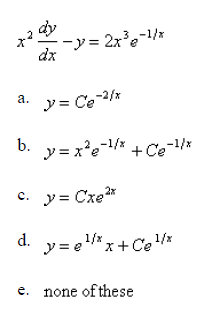Provide an appropriate response.If a < b, is it always true that  >
>  ? Explain.
? Explain.
What will be an ideal response?
Explanations will vary. One possible answer:No. The second statement only follows from the first if a and b are either both positive or both negative. Divide both sides of the original inequality by (ab). If a and b are of opposite signs, then (ab) < 0. When dividing by a negative number, the inequality sign must be reversed  .In addition, if a (or b) is zero, then its reciprocal is undefined.
.In addition, if a (or b) is zero, then its reciprocal is undefined.
You might also like to view...
Determine either absolute convergence, conditional convergence or divergence for the series.
A. Converges conditionally B. Converges absolutely C. Diverges
Solve the problem.A can has a surface area of 790 square inches. Its height is 6.91 inches. What is the radius of the circular top? Round to the nearest hundredth.
A. 3.99 in. B. 10.39 in. C. 8.28 in. D. 18.2 in.
Solve the differential equation.

Find the solutions to the system of equations by the addition method.3x -  = 10
= 10 -
-  =
= 
A. (3,  )
)
B. (3, -  )
)
C. (3,  )
)
D. (3,-  )
)